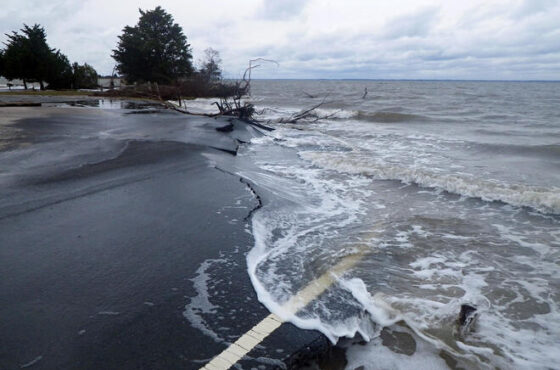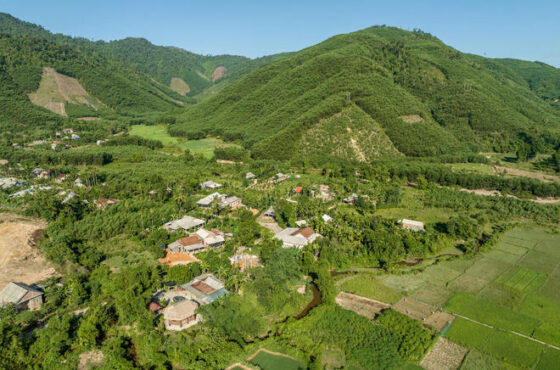Neurotoxic Manganese Threatens Chicago’s Southeast Side
Published by the Natural Resources Defense Fund
The local Chicago PBS Station WTTW has been doing a fantastic job of covering the ongoing concerns about neurotoxic manganese being stored on Chicago’s Southeast Side. This is the same community where petcoke and coal facilities have been causing a public health hazard also by dusting up the residential neighborhoods next door.
I was honored to participate in a panel discussion of the manganese issue on the station’s live “Chicago Tonight” show earlier this week. It was a good overview of the issue and concerns held by both the neighbors in the area and City officials—as well as an opportunity for the public to hear from the lawyer representing the Pittsburgh-based company handling manganese in close proximity to the community, S.H. Bell.

S.H. Bell Chicago facility
Google Maps
In follow up coverage, WTTW has noted that the City of Chicago has begun to analyze swabs of brown dust taken from facades of nearby homes—I mistakenly said “yellow” in the broadcast—to determine if they show the neurotoxin manganese present beyond the company’s fence line. (As I noted on the show, EPA took wipe samples in 2014, noting that the highest level of manganese was found in the sample taken in “direct proximity to the S.H. Bell facility.” EPA also has photos from 2014 of homes in the area with brown dust on their siding.)

Brown dust on SE Side Chicago home, 2014
U.S. EPA
While we do not have a full accounting of the impact that other manganese operations around the City may be having on Chicagoans, it is abundantly clear that the neighbors’ concerns about this facility are well-founded:
- The facility is located across the street from residential neighborhoods, with nearly 10,000 children living within a one-mile radius, and neighbors report concerns with dust from the facility showing up on their homes;
- The company’s Ohio facility was the subject of enforcement actions as early as 2008, yet S.H. Bell delayed beginning to enhance controls at its facility near the dense, residential Chicago neighborhood until 2014, when U.S. EPA issued it a Notice of Violation for dust problems;
- Starting in 2014, the company then resisted installing fenceline monitors for another two plus years, finally agreeing after EPA sued the company in federal court;
- Monitored levels of manganese at the Chicago site publicly released to date are double the levels recently measured at other nearby industrial sites and not far below the federal screening levels, even with the company on its best behavior given the public scrutiny;
- The company even now will continue to conduct some operations like loading and unloading of manganese from barges in the open air, relying on a mobile spray truck (which the City last summer found far away from its target during an inspection) to control potential dust;
- Nor is the company agreeing to employ all available measures to ensure that trucks don’t track manganese out into the community; and
- New research is underway on both children and adults that should help better characterize the threats to health from manganese exposures in community settings like the Southeast Side of Chicago.
That is why we support the community’s call for every effort to be made to eliminate this threat from their midst, through complete removal of the substance at S.H. Bell. The City should also be looking at whether similar situations of manganese dust in very close proximity to homes and schools exist elsewhere in Chicago, and consider whether broader action needs to be taken as experts raise concerns.
Moreover, the City needs to be taking clear and aggressive steps to address the cumulative impacts of pollution on the industrialized Southeast Side and in similarly burdened Chicago communities.
The Public Health Department’s commitment is essential to addressing the manganese dust in the area, but the Department has very little ability to impact the key processes needed to really bring change: the zoning and land use permitting processes that govern which industrial facilities end up where in our city. Citizens need to be front and center with real power to impact the zoning and permitting processes, as well as other land use decisions, that allow and indeed encourage concentration of dirty operations that threaten communities’ air, water, and health.
One of the issues that sparked the “Chicago Tonight” panel this week was a letter sent by Senator Durbin requesting additional studies be conducted on the Southeast Side. Major credit for that important action should go to the neighbors themselves, who have lobbied elected officials for support and attention to this latest pollution issue in the area. The Southeast Environmental Task Force, Southeast Side Coalition to Ban Petcoke and, most notably, the Rebel Belles (the Southeast Side’s next generation of advocates to safeguard the environment) all lobbied the Senator directly (with help from Moms Clean Air Force).
While problems in the area are many, so are the people who continue to bring energy and effort to solving things on the Southeast Side. NRDC is honored to work with the community on the Southeast Side to help solve these environmental injustices.
Read the full article at: https://www.nrdc.org/experts/meleah-geertsma/neurotoxic-manganese-threatens-chicagos-southeast-side





